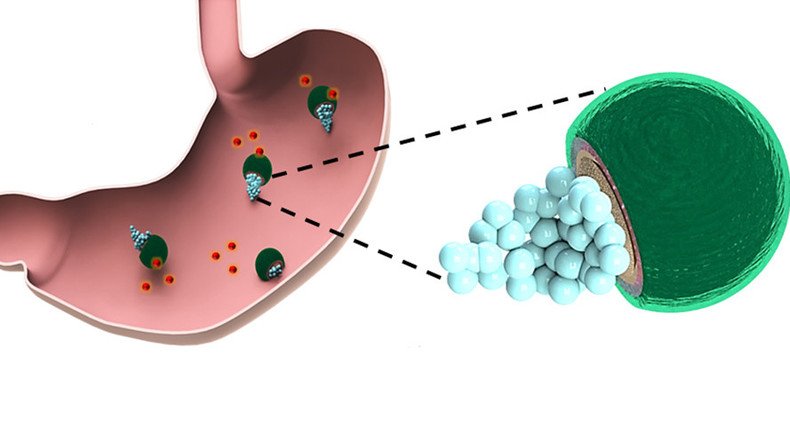Tiny robots used to treat bacterial infections (VIDEO)

A micromotor drug delivery system has been used to treat bacterial infections in the stomachs of mice, a US school of engineering has announced.
The tiny vehicles, each of which measure about half the width of a human hair, were designed to swim through the rodent’s gut and neutralize the gastric acid before delivering their cargo of antibiotics.
The breakthrough experiment was carried out by nanoengineers from the UC San Diego Jacob School of Engineering. It is the first time a device of its type has been tested.
/CENTER>Drug-delivering micromotors treat their first #bacterialinfection in the #stomachhttps://t.co/6PI63cilmO@ucsandiego@NatureComms
— Phys.org (@physorg_com) August 16, 2017
"It's a one-step treatment with these micromotors, combining acid neutralization with therapeutic action," said Berta Esteban-Fernández de Ávila, a co-author of the paper, published in Nature.
Micromotors are tiny particles that can propel themselves autonomously when placed in a chemical solution. The UCSD team believes their use offers a promising new method for treating stomach and gastrointestinal tract diseases with acid-sensitive drugs.
Gastric acid can be destructive to orally administered drugs such as antibiotics and protein-based pharmaceuticals. To combat this, drugs used to treat bacterial infections and ulcers are taken with additional substances, called proton pump inhibitors, which suppress gastric acid production.
However, when taken in higher doses over longer periods these can have adverse side effects, including headaches, diarrhea and fatigue and even anxiety or depression.
The micromotors offer a possible solution to this problem as they have a built-in mechanism to neutralize gastric acid and effectively deliver the drugs without the use of proton pump inhibitors.
Each micromotor consists of a spherical magnesium core coated with several layers of protection that allows the motors to stick to the stomach wall.
The magnesium cores react with gastric acid, generating a flow of hydrogen microbubbles that propel the motors around inside the stomach. The reaction also temporarily reduces the amount of acid in the stomach, according to researchers.
The tests were carried out on mice with Helicobacter pylori infections. One group of rodents were given a clinical dose of the antibiotic clarithromycin once a day for five consecutive days, while another group was treated with micromotors.
Paracetamol use in pregnancy could inhibit masculinity & dampen sex drive of male offspring – study https://t.co/1MljuxhOj2pic.twitter.com/vOqqROlUvy
— RT (@RT_com) June 24, 2017
Results showed treatment with the micromotors was slightly more effective than the equivalent dose of antibiotic given in combination with proton pump inhibitors.
While the findings are promising, researchers say further studies are necessary to evaluate the therapeutic performance of the micromotors and to test different drug combinations with them.












